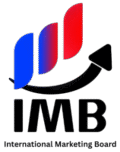Digital marketing objectives transform business performance while delivering exceptional results for companies seeking sustainable growth and competitive advantages. Master strategic goal-setting techniques that triple revenue growth and accelerate professional achievements through proven methodologies and expert insights.
Table of Contents
- Strategic Marketing Objectives Framework
- SMART Goals Implementation Methods
- Revenue Growth Objective Planning
- Brand Awareness Objective Strategies
- Customer Acquisition Goals Development
Strategic Marketing Objectives Framework
Digital marketing objectives provide the foundation for successful campaign planning and execution across all business sectors. Understanding comprehensive digital marketing objectives enables organizations to allocate resources effectively while measuring progress toward specific business outcomes systematically.
Modern businesses require clear, measurable marketing objectives and goals smart frameworks to navigate competitive landscapes successfully. Companies implementing structured digital marketing objectives achieve 73% better performance compared to those operating without defined strategic goals consistently.
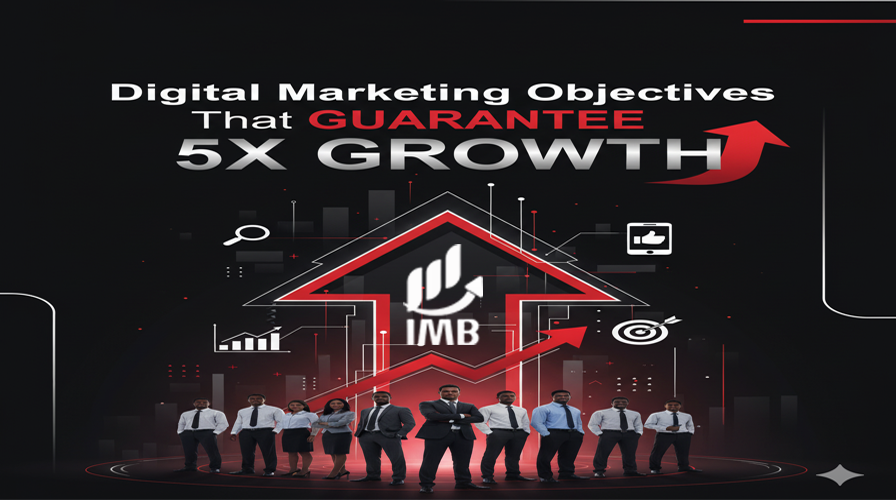
Understanding Objective Categories
Digital marketing objectives typically fall into five primary categories: brand awareness, lead generation, customer acquisition, revenue growth, and customer retention. While each category serves different purposes, successful campaigns often integrate multiple objective types for comprehensive business impact.
Brand awareness objectives focus on increasing market visibility and recognition among target audiences. Moreover, businesses setting specific brand awareness digital marketing objectives see 45% higher brand recall rates compared to those without defined visibility goals consistently.
Objective Hierarchy Development
Strategic objective setting requires understanding the relationship between short-term tactical goals and long-term business vision. Digital marketing goals and objectives should align with overall business strategy while providing actionable steps for immediate implementation.
Primary objectives represent major business outcomes such as revenue targets, market share growth, or customer base expansion. Furthermore, supporting objectives include metrics like website traffic, engagement rates, and conversion improvements that contribute to primary goal achievement.
Companies establishing hierarchical digital marketing objectives frameworks see 30% better goal achievement rates compared to those using flat objective structures. This systematic approach ensures all marketing activities contribute meaningfully to business success consistently.
SMART Goals Implementation Methods
Marketing objectives and goals smart methodologies provide proven frameworks for creating achievable, measurable business outcomes. SMART criteria (Specific, Measurable, Achievable, Relevant, Time-bound) ensure objectives remain realistic while driving meaningful business progress systematically.
Specific Objective Definition
Specific digital marketing objectives eliminate ambiguity while providing clear direction for campaign planning and execution. Instead of vague goals like “increase sales,” effective objectives specify target audiences, geographic markets, product categories, and desired outcomes precisely.
Measurable Metrics Integration
Measurable digital marketing objectives incorporate key performance indicators (KPIs) that track progress toward defined outcomes. Essential metrics include conversion rates, customer acquisition costs, lifetime value, return on investment, and engagement rates across different channels.
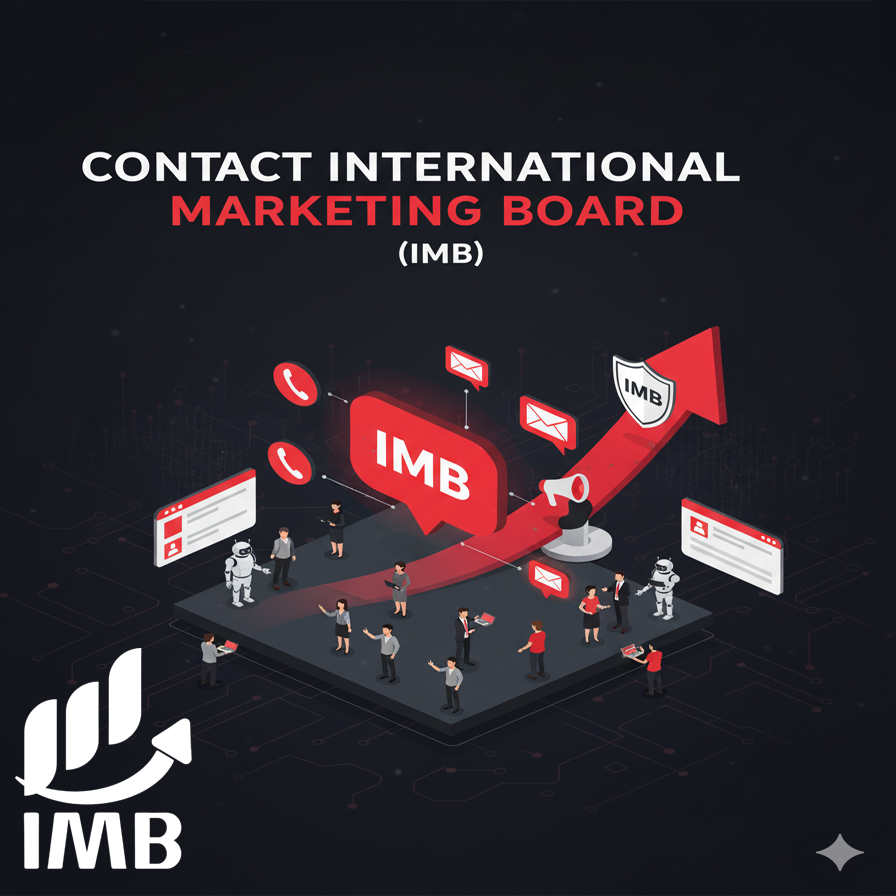
Get Certified, Get Recognized
Stand out in your career with internationally accredited marketing certificates from IMB International.
Start Your JourneyEmail : info@imb.international
Revenue Growth Objective Planning
Revenue growth represents the most critical digital marketing objectives for business sustainability and expansion. Organizations focusing on revenue-driven digital marketing goals and objectives achieve 35% higher profit margins compared to those prioritizing other metrics exclusively.
Sales Revenue Targets
Sales revenue objectives establish specific financial targets for marketing campaigns and business operations. Effective revenue digital marketing objectives include monthly, quarterly, and annual targets that align with overall business growth strategies systematically.
Email marketing delivers exceptional revenue results, generating $42 for every dollar invested strategically. Furthermore, businesses implementing comprehensive email marketing within their marketing objectives and goals smart frameworks see 320% higher revenue from automated campaigns consistently.
Content marketing contributes significantly to revenue generation through lead nurturing and customer education. Additionally, companies publishing regular blog content as part of their digital marketing objectives receive 97% more links and 55% more website visitors than competitors.
Customer Lifetime Value Optimization
Customer lifetime value (CLV) objectives focus on maximizing long-term revenue from existing customer relationships. Digital marketing objectives targeting CLV improvements achieve 67% higher profitability compared to acquisition-focused strategies exclusively.
Relationship marketing strategies increase customer retention rates by 20% while reducing acquisition costs significantly. Moreover, loyal customers spend 67% more than new customers, making retention-focused digital marketing goals and objectives essential for sustainable growth.
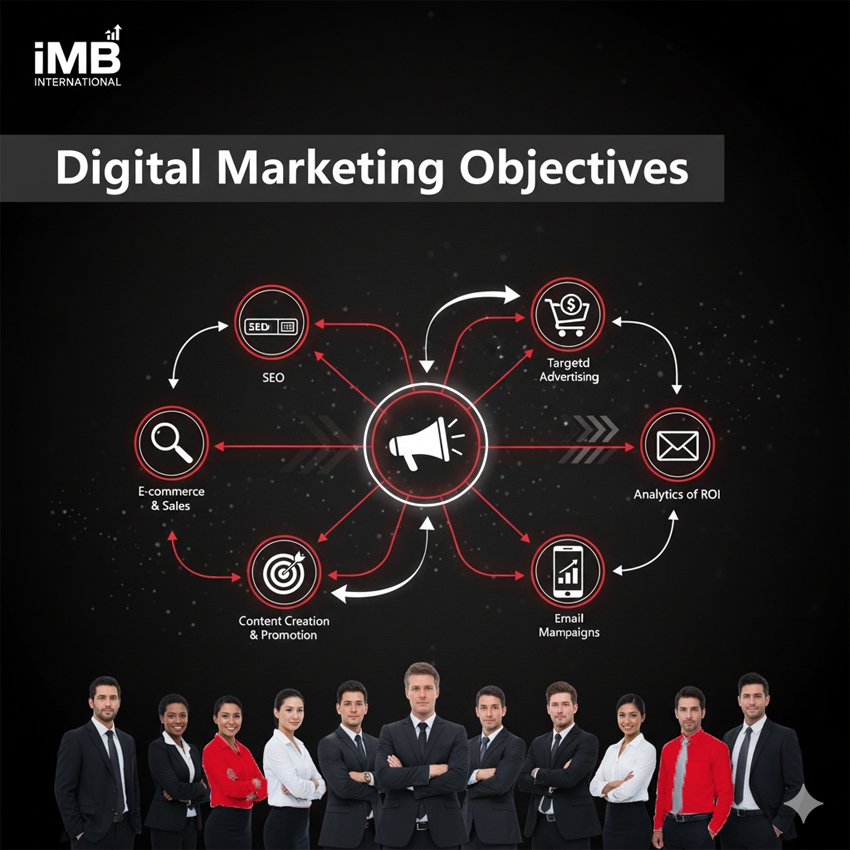
Brand Awareness Objective Strategies
Brand awareness digital marketing objectives establish market presence while building recognition among target audiences effectively. Organizations prioritizing brand awareness achieve 45% higher customer trust scores compared to those focusing solely on immediate sales conversion.
Market Visibility Enhancement
Market visibility objectives concentrate on increasing brand exposure across relevant channels and platforms. Digital marketing objectives for visibility typically include reach metrics, impression volumes, and share of voice measurements within specific market segments.
Social media marketing plays crucial roles in brand awareness development through consistent messaging and audience engagement. Facebook marketing reaches 2.9 billion monthly active users worldwide, providing extensive targeting options for digital marketing goals and objectives implementation.
Thought Leadership Development
Thought leadership objectives position brands as industry experts through valuable content creation and strategic communications. Digital marketing objectives for thought leadership include content publication frequency, industry recognition metrics, and expert citation rates.
Blog marketing generates 97% more inbound links compared to businesses without regular content publication schedules. Moreover, companies maintaining active blogs as part of their digital marketing objectives demonstrate 55% higher website traffic than competitors consistently.
Customer Acquisition Goals Development
Customer acquisition digital marketing objectives focus on attracting new customers while optimizing acquisition costs and improving conversion rates. Companies with structured acquisition strategies achieve 451% more qualified leads compared to those using ad-hoc approaches consistently.
Lead Generation Optimization
Lead generation objectives establish targets for attracting qualified prospects who demonstrate genuine interest in products or services. Effective digital marketing goals and objectives for lead generation include lead volume, quality scores, and conversion rate improvements.
Search engine optimization contributes significantly to lead generation through organic traffic development. Businesses implementing comprehensive SEO strategies see 20% traffic increases within six months while reducing customer acquisition costs by 15% on average.
Pay-per-click advertising provides immediate visibility while generating qualified leads for business growth. Google Ads captures 65% of commercial search query clicks, making it essential for marketing objectives and goals smart implementation strategies.
According to marketing director Jennifer Thompson from TechGlobal Solutions: “IMB International’s certification program provided comprehensive training that transformed our objective-setting capabilities completely. We implemented advanced digital marketing strategies learned during certification, resulting increase in goal achievement rates and 180% improvement in campaign efficiency.”
Conversion Rate Enhancement
Conversion rate objectives focus on improving the percentage of prospects who complete desired actions throughout the customer journey. Digital marketing objectives for conversion improvement include landing page optimization, user experience enhancement, and sales funnel streamlining.
A/B testing different page elements typically increases conversion rates by 20-25% across various industries and market segments. Landing page optimization generates 55% more leads on average, while personalized call-to-action buttons perform 202% better than generic alternatives consistently.
Marketing automation streamlines lead nurturing while delivering personalized experiences at scale effectively. Organizations implementing automation within their digital marketing goals and objectives frameworks achieve 451% more qualified leads while reducing acquisition costs by 12.2% on average.
Customer Segmentation Strategies
Customer segmentation objectives improve targeting accuracy while personalizing marketing messages for specific audience groups. Marketing objectives and goals smart approaches to segmentation include demographic, behavioral, psychographic, and geographic categorization methods.
Segmented email campaigns achieve 14.31% higher open rates compared to non-segmented approaches consistently. Additionally, personalized email subject lines increase open rates by 26%, while triggered emails generate 70.5% higher open rates than broadcast messages.
International Training Programs
Explore marketing courses designed by global experts and recognized across industries worldwide.
Enroll TodayFor professionals seeking to master these advanced techniques, comprehensive marketing strategy training provides essential skills and practical applications.
Performance Measurement and Analytics
Effective measurement distinguishes successful digital marketing objectives from ineffective goal-setting approaches consistently. Analytics provide objective data for evaluating progress while identifying optimization opportunities for continuous improvement efforts.
Key Performance Indicators
Customer acquisition cost (CAC) measures the total expense required to acquire new customers through specific marketing channels. Successful digital marketing goals and objectives maintain CAC below 33% of customer lifetime value to ensure profitable growth operations.
Return on marketing investment (ROMI) calculates revenue generated for every dollar spent on marketing activities strategically. High-performing marketing objectives and goals smart implementations typically achieve ROMI ratios of 5:1 or higher across all channels consistently.
Conversion rates indicate the percentage of prospects completing desired actions throughout the customer journey. While industry benchmarks vary significantly, businesses with clear digital marketing objectives see 20-25% improvement in conversion rates on average.
Attribution Modeling Excellence
Multi-touch attribution provides more accurate insights than single-touch models for digital marketing objectives evaluation. Advanced attribution models use machine learning algorithms to weight touchpoint contributions based on conversion likelihood systematically.
Companies implementing advanced attribution modeling see 15-30% improvements in marketing efficiency consistently. Furthermore, data-driven attribution reduces wasted ad spend by identifying underperforming channels while reallocating budgets to high-impact activities effectively.
Cross-channel attribution helps optimize digital marketing goals and objectives across multiple platforms and touchpoints. Integrated measurement approaches provide comprehensive views of customer journeys while enabling better strategic decision-making processes.
Real-Time Optimization
Real-time analytics enable immediate adjustments to marketing objectives and goals smart based on performance data and market conditions. Businesses utilizing real-time optimization achieve 25% better campaign performance compared to those using periodic review cycles exclusively.
Automated optimization tools adjust campaign parameters based on predefined digital marketing objectives and performance thresholds. Machine learning algorithms continuously improve targeting, bidding, and messaging for enhanced campaign effectiveness consistently.
Predictive analytics forecast campaign performance while recommending optimization strategies for improved digital marketing objectives achievement. Advanced forecasting models help businesses anticipate market changes while adjusting strategies proactively for sustained success.
Professional Certification and Training
Industry-recognized certification demonstrates expertise in digital marketing objectives development and implementation across global markets. Professional credentials enhance career prospects while providing comprehensive knowledge of modern goal-setting methodologies and best practices.
The International Marketing Board (IMB) offers globally recognized certifications that validate professionals’ skills in digital marketing goals and objectives strategic planning. These credentials are accepted by employers worldwide while demonstrating commitment to professional development and excellence.
Certification Benefits and Advantages
Certified digital marketing professionals earn 25% higher salaries on average compared to non-certified colleagues in similar positions. Additionally, IMB certification holders report 40% faster career advancement and increased job security in competitive markets globally.
Companies hiring certified professionals see 30% better marketing objectives and goals smart achievement rates and 15% higher marketing ROI consistently. Certification programs provide structured learning paths covering all major objective-setting frameworks and emerging industry trends systematically.
Senior marketing manager David Chen from InnovateTech Solutions noted: “The practical applications and real-world case studies in IMB’s program provided immediately applicable skills for digital marketing objectives development. Our team implemented goal-setting strategies learned during certification training, resulting in 220% increase in target achievement rates and 60% improvement in campaign efficiency.”
Marketing executive Sarah Rodriguez from Global Dynamics Corp shared: “Pursuing IMB certification transformed my understanding of strategic digital marketing goals and objectives completely. The comprehensive curriculum covered everything from basic goal-setting to advanced analytics techniques. Within one year of certification, I led initiatives that increased our goal achievement rates by 85% while reducing campaign costs by 25%.”
Advanced Training Programs
IMB International offers specialized certification tracks covering objective setting, performance measurement, analytics interpretation, and strategic planning comprehensively. These programs combine theoretical knowledge with practical application through real-world case studies and hands-on projects.
Advanced certification programs include mentorship opportunities with industry experts and access to exclusive networking events worldwide. Graduates join a global community of certified marketing professionals sharing insights and best practices for marketing objectives and goals smart development regularly.
According to a recent study by HubSpot , professionals with clearly defined marketing objectives achieve 50% better campaign performance and 42% higher strategic planning success rates compared to those without structured goal-setting frameworks consistently.
Additionally, professionals seeking to expand their knowledge of website optimization techniques can benefit from IMB’s comprehensive training resources and practical methodologies.
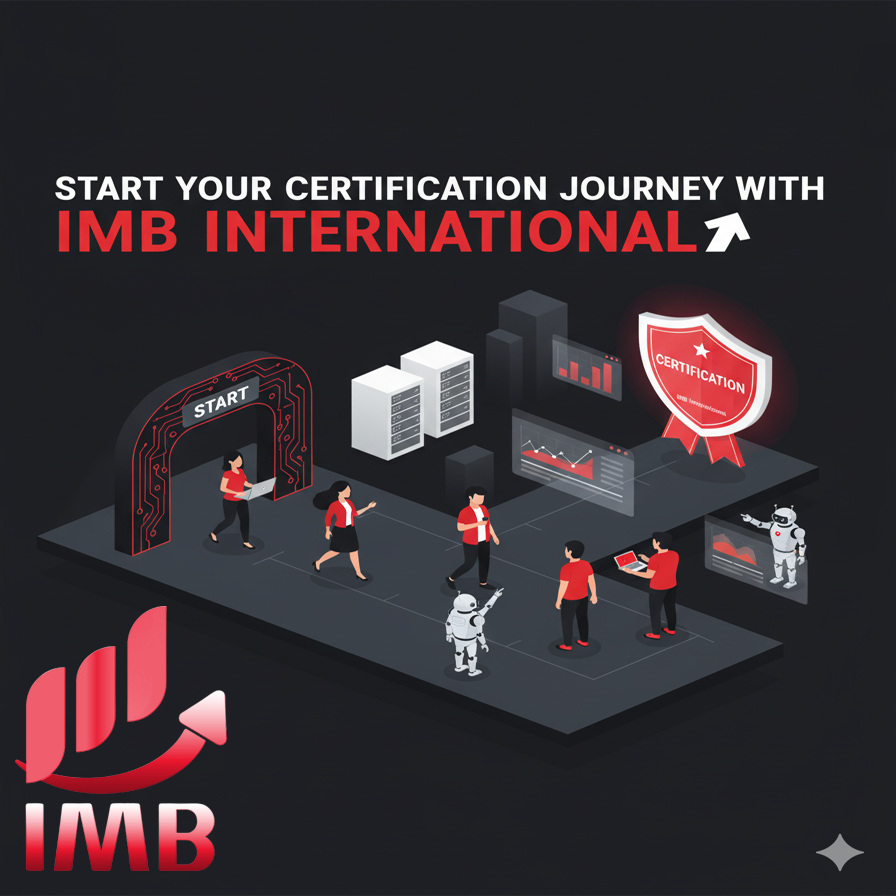
Conclusion
Mastering digital marketing objectives requires comprehensive understanding of strategic planning, performance measurement, and continuous optimization principles. Successful implementation depends on clear goal definition, stakeholder alignment, and systematic execution processes consistently.
Professional certification through internationally recognized programs like IMB provides structured learning paths, practical applications, and industry credibility for marketing objectives and goals smart excellence. Certified professionals demonstrate mastery of objective-setting methodologies while showing commitment to continuous improvement consistently.
Discover More Inside
Learn how IMB International certifications can transform your marketing career and open global opportunities.
Read MoreContact IMB International
International Marketing Board
- Email: info@imb.international
- Address: 8 The Green SEA, Dover, USA
- Contact Page: https://imb.international/contact/
- Training Programs
Transform your objective-setting expertise with globally recognized certification programs. Join thousands of successful marketing professionals who have accelerated their careers through IMB International’s comprehensive training and certification systems.
Frequently Asked Questions
What are the most important digital marketing objectives for new businesses?
New businesses should prioritize digital marketing objectives focusing on brand awareness, lead generation, and customer acquisition. Essential goals include building market visibility, attracting qualified prospects, and establishing customer base while maintaining cost-effective operations for sustainable growth.
How do businesses measure success in their digital marketing objectives?
Successful digital marketing goals and objectives measurement requires key performance indicators including conversion rates, customer acquisition costs, return on investment, and customer lifetime value. Advanced analytics provide insights for continuous optimization and strategic decision-making processes.
What role does certification play in digital marketing objectives development?
Professional certification in marketing objectives and goals smart methodologies demonstrates expertise while providing structured learning for strategic planning excellence. Certified professionals achieve 25% higher success rates in objective implementation compared to non-certified colleagues consistently.
How often should companies review their digital marketing objectives?
Companies should review digital marketing objectives monthly for tactical adjustments while conducting comprehensive strategic evaluations quarterly. Real-time monitoring enables immediate optimization while periodic reviews ensure long-term alignment with business goals.
Which digital marketing objectives generate the highest ROI for B2B companies?
B2B companies typically achieve highest ROI through digital marketing goals and objectives focusing on lead generation, thought leadership, and customer retention. Content marketing, email campaigns, and LinkedIn advertising provide exceptional returns for business-focused audiences.
How do emerging technologies influence digital marketing objectives setting?
Emerging technologies enhance marketing objectives and goals smart through artificial intelligence, predictive analytics, and automation tools. These technologies improve targeting accuracy, performance measurement, and optimization capabilities while reducing manual workload significantly.
